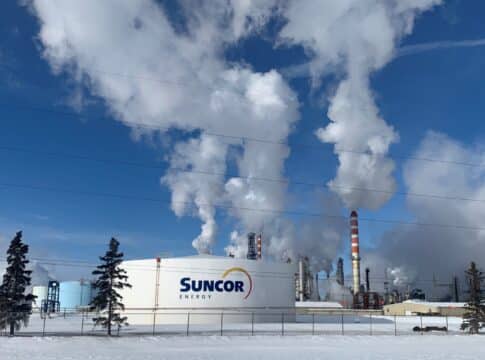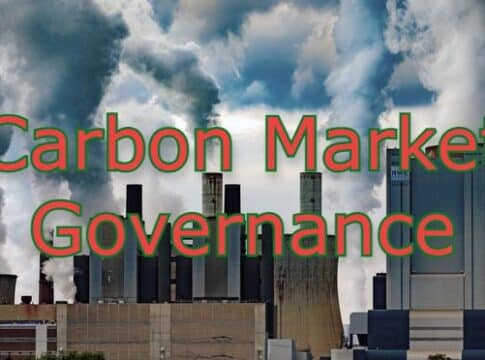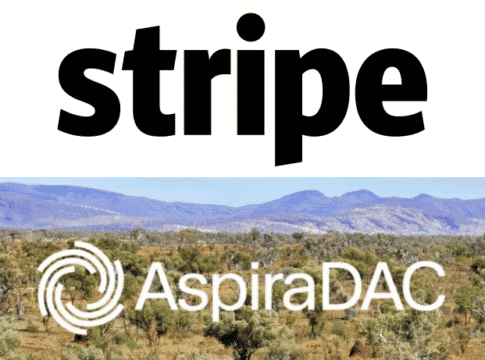Suncor’s Ambitious Net Zero Plan
Suncor, North America’s largest oil company, vows to cut annual emissions by 10 megatons by 2030 and reach net zero by 2050.
The Canadian-based oil sands company recently revealed its 2022 Climate Report, detailing its climate strategy.
Despite their emission reduction plans, they increased their Scope 1 and 2 emissions in 2021 over 2020.
As for its Scope 3 emissions, Suncor reported it to be 127 Mt CO2e.
Suncor’s Scope 3 emissions only include upstream production only. There is also downstream production, which includes everything down to the gas pump.
The whole process from exploration to the pump only equates to 20-30% of the overall carbon emissions, with up to 80% of the GHG emissions coming from the pump to the tailpipe.
Suncor has also forecasted to increase its oil production up to 800 thousand barrels/day through 2025. The graph below shows that the firm plans to grow oil production by 15% more than its 2020 levels.
Source: Rystad Energy UCube (September 2021); Oil Change International calculations based on IEA NZE and IPCC P1 scenarios
Suncor’s Carbon Emissions
Suncor’s major emission comes from its core business operation – the oil sands (80%). This includes five key processes, each of which contributes certain amounts to its entire carbon emission.
Suncor also has a higher emissions intensity versus the overall oil & gas sector, as a bulk of Suncor’s business is involved in the energy-intensive Canadian oil sands.
With Suncor planning on increasing production at the same time as they reduce overall emissions, they need to find a solution to quickly lower their carbon emissions.
To reach its ambitious net zero 2050 target, Suncor plans to reduce emissions through two major strategies:
Optimize base business operations
Expand low emissions businesses
Reducing Emissions in Base Business
In a snapshot, here’s how Suncor aims to reduce emissions by 2030.
Investing in CCUS
A big part of this strategy is to invest in Carbon Capture Use and Storage (CCUS) projects. It involves capturing and sequestering CO2 from point sources or directly sucking it from the air.
Most energy forecasts consider CCUS technology as key to achieving the Paris Agreement goals. In fact, it’s also a critical component of Suncor’s net zero efforts.
The oil firm is a major player in the energy sector’s Pathway Alliance (Canada’s oil sands producers group) proposed carbon sequestration hub. It will include a carbon transportation line that connects over 20 oil sands facilities in northern Alberta to a carbon sequestration hub.
The image below illustrates the route.
Suncor is also investing in Svante which develops a post-combustion CO2 capture tech for industrial emissions. The CCUS technology captures CO2 from gas products and processes it for industrial use or permanent storage.
Fuel switching
The oil sands producer also explores fuel switching. It substitutes high-emitting fuels from coal-fired power plants with hydrogen or natural gas with lower emissions. A major example of this is Suncor’s Base Plant Cogeneration project that will start by late 2024.
Cogeneration refers to the process of producing both steam and electricity via a natural gas-fuelled process. In its project above, Suncor will replace petroleum coke with natural gas. It will also export low carbon electricity to the provincial grid to power Alberta homes and businesses.
Suncor claims that this initiative is vital to its net zero emissions target. It will reduce about 1 Mt CO2e of its Scope 1 and 2 emissions. Plus, it will also result in 4 Mt emissions reduction each year due to exporting low carbon power from natural gas.
Energy efficiency
This strategy involves a couple of initiatives to improve Suncor’s production efficiency. These include plenty of measures such as:
replacing aging assets with modern designs;
digital enhancements such as advanced process controls
new chemistry aids;
additive manufacturing for optimizing processes; and
steam, boiler feedwater, and heat integration to enhance steam generation efficiency
A crucial part of this effort is the steam assisted gravity drainage (SAGD) enhancement processes. This involves the use of solvents and lower pressure for bitumen recovery. Bitumen is a semi-solid form of petroleum.
SAGD technology has the potential to lower GHG emissions by 30%. If further enhanced, SAGD emissions reduction can be 70%.
If this initiative turns successful, it can produce electricity with zero carbon emissions while also improving Suncor’s bitumen recovery process.
Suncor aims to launch a pilot SAGD project to assess its low carbon potential by early 2023.
Expanding Low-emissions Businesses
Under this strategy is the low carbon power benefit of Suncor’s cogeneration project explained earlier. The lower carbon electricity that the project will produce can cut emissions by total of 5 Mt CO2e per year compared to coal-fired power.
Part of this effort is the use of renewable energy to generate power.
Since 2002, Suncor has developed 8 wind power projects in 3 provinces. Today, the energy firm is a partner in 4 wind power facilities in Alberta and Ontario with 111 MW total capacity.
Suncor is also developing its Forty Mile power project in southeastern Alberta. It represents 200 MW of wind capacity.
Another key part of Suncor’s net zero emissions pathway has been investing in renewable fuels since the early 2000s. It invests in biofuel technologies that make ethanol and methanol out of waste streams. These include industrial, forestry, and agricultural wastes.
Suncor invests in companies that produce renewable fuels like LanzaTech and LanzaJet. LanzaTech uses bacteria to recycle CO2 waste into fuels and chemicals. LanzaTech focuses on producing sustainable aviation fuel (SAF) using ethanol from recycled CO2 waste.
These renewable fuels give the oil major more ways to cut its carbon emissions.
Lastly, Suncor is producing grey hydrogen via its steam methane reforming process of natural gas. Using this hydrogen in its refineries helps in Suncor’s net zero emissions.
The firm also plans to use hydrogen to help decarbonize the transportation industry. It takes part in the Alberta Zero Emissions Truck Electrification Collaboration project, a multi-party effort to design, manufacture, and test hydrogen-powered trucks.
Working with others to reach net zero emissions
Apart from cutting emissions from its direct and indirect sources, Suncor seeks to work with others to cut its carbon footprint. The company will do this by:
working with governments to provide affordable, low-carbon energy options for consumers
growing its renewable fuels business to support increasing wholesale and retail demand
expanding its hydrogen capacity to offer transportation solutions as demand increases
expanding its coast-to-coast charging stations.
The oil giant has been pumping its money on innovations and technologies that can slash the sector’s emissions. It works or partners with XPRIZE, Avatar Innovations, Canada’s Oil Sands Innovation Alliance (COSIA), Evok Innovations, Energy Futures Lab, Clean Resource Innovation Network, and more.
Regulatory Emissions Credits
For the first time, Suncor disclosed the volume of its emission credits (also called carbon credits) to meet its compliance obligations.
In 2021, the company retired about 0.6 Mt of emission credits. This reduces its equity emissions from 28.5 Mt CO2e to 27.9 Mt CO2e.
The carbon credits were from Suncor’s operations that performed better than regulatory benchmarks. They’re from its wind and cogeneration efforts that yield low carbon power and fuel. Some credits were also bought from carbon exchanges.
The post Suncor’s Ambitious Net Zero Plan appeared first on Carbon Credits.



